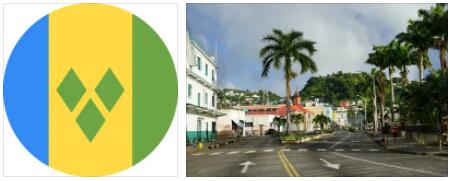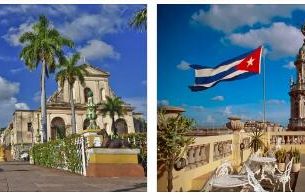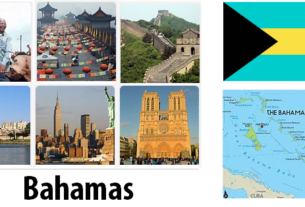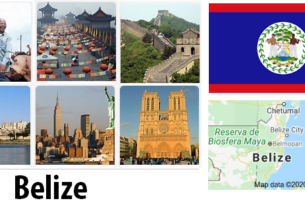State structure and political system of Saint Vincent and the Grenadines
Sovereign state within the Commonwealth. parliamentary democracy. The Constitution of 1979 is in force. Administrative-territorial division – 6 parishes: Charlotte, Grenadines, St. Andrew, St. David, St. George and St. Patrick. The largest cities and towns: Kingstown, Georgetown, Chateaubelaire, Buera. The British dominion, the head of state is the Queen (since 1952 – Elizabeth II), represented by the Governor General (since 2002 – F. N. Ballantyne). Check diseaseslearning for political system of St. Vincent. Legislative power is vested in a unicameral chamber of assembly consisting of 6 senators appointed by the governor-general and 15 deputies elected by popular vote for a term of 5 years (last election March 28, 2001). Executive power is vested in the government headed by the prime minister. The leader of the party that won the election, as a rule, is appointed prime minister, since March 29, 2001 – R. Goncalves. Judicial power belongs to the Eastern Caribbean Supreme Court (located in Saint Lucia). The affairs of local self-government are under the jurisdiction of the relevant ministry, there are no local authorities in any of the 6 parishes. Formally, there are 6 political parties, in fact – a two-party system. The Labor Unity Party was established in 1994 by combining the St. Vincent Labor Party, which had been active since 1955 and headed the first independent government, and the National Unity Movement. It is a party of social democratic orientation, stands for the national unity of all citizens and their equal rights, but pays special attention to protecting the interests of the poor and disadvantaged residents. Advisory member of the Socialist International. In the 2001 elections, she received 57% of the vote and 12 seats in the House of Assembly. Leader – R. Goncalves. The New Democratic Party was founded in 1975. It occupies a center-right position. It is a member of the International Democratic Union. Number of 7 thousand people. Was in power in 1984-2001. In the 2001 elections, she won 3 seats in the House of Assembly. Leader – A. Eustace. The United Popular Movement was created in 1979 by the merger of several small left-wing groups. Adheres to a socialist orientation. In the 1979 elections, it won 14.4% of the vote, since then it has been constantly losing the support of the electorate. In the intervals between elections, it practically does not function. Leader – A. Saunders. The National Reform Party, the People’s Progressive Movement and the Progressive Labor Party have no political influence. Domestic policy is aimed at reducing unemployment, increasing funding for social programs (education, medicine, road construction), economic restructuring. In foreign policy, the government supports programs for integration into CARICOM and the Free Trade Area of the Americas. The armed forces are represented by the local police corps.
Economy of Saint Vincent and the Grenadines
The volume of GDP in current prices is 360.6 million US dollars, GDP per capita is 3.05 thousand US dollars (2002 estimate). In the 1990s the average annual GDP growth was 2.5%, in 2001 there was a decrease in GDP by 0.8%, and consumer price deflation by 0.4% was also recorded (2001). Unemployment 19.8% (2000). The share of agriculture and fisheries in GDP is 11.7%, energy 7.1%, construction and industry 15.8%, service sector 65.8% (2002 estimate). The manufacturing industry is represented by the production of cement, furniture, clothing, processing of agricultural products and the production of starch from arrowroot (Saint Vincent and the Grenadines is the world’s leading producer, about 150 tons of starch annually). In the 1990s enterprises for the production of tennis rackets and the assembly of electrical equipment for export were opened. The economy of Saint Vincent and the Grenadines remains dependent on traditional agriculture. Cultivated (2002): bananas (main cash crop, production declining, 45 thousand tons), coconuts (23.7 thousand tons), sweet potatoes, tobacco (85 tons), spices, arrowroot. The number of cattle is 6.2 thousand heads, pigs – 9.5 thousand, sheep – 13 thousand, goats – 6 thousand, chickens – 200 thousand (2002). Fishing for domestic consumption and for export (7.3 thousand tons of fish were caught in 2000). The total length of motor roads is 1.04 thousand km, of which 340 km are paved. The main port is Kingstown. 6 airports, including 5 with paved lanes (up to 1523 m long). An undersea cable connects Saint Vincent and the Grenadines with other islands in the Caribbean. The number of Internet users in 2001 reached 3500 people. The central bank in relation to Saint Vincent and the Grenadines is the Eastern Caribbean Central Bank. The exchange rate of the national currency is fixed to the US dollar at a ratio of 2.7:1. A small offshore banking center (the first offshore laws were adopted in 1976, new financial legislation in 1996). Attracting foreign capital contributes to the complete confidentiality of banking information. In con. In 2001, 38 banks were registered, but the number is decreasing as St. Vincent and the Grenadines is listed as a country whose legislation favors money laundering. Efforts are being made to get out of this “black” list. In 2002, Saint Vincent and the Grenadines was removed from the OECD list of countries that constitute a “tax haven”. The provision of a “flag of convenience” is practiced. In Saint Vincent and the Grenadines, 788 vessels (with a displacement of more than 1000 tons) are registered, including 735 foreign ones. Throughout the 1990s. there was a steady increase in the number of tourists: from 77 thousand people. in 1986 to 245.4 thousand people. in 2002 (including 70.3 thousand cruise ships and 84.5 thousand from yachts). Particular attention is paid to tourism related to the rental and recreation on yachts, as well as sailing. Tourism revenue in 2002 (estimated) was $78.4 million. The share of taxes in GDP amounted to 25.5%, incl. OK. 1/2 – taxes and duties on foreign trade activities and approx. 1/3 – income tax (2002 estimate). The state budget in 1998-2001 was reduced to a positive balance, in 2002, as a result of large-scale social programs, the budget deficit amounted to 3.5%. External debt 46% of GDP (2002). Total public sector debt 68.9% of GDP (2001). The volume of exports for 1998-2002 decreased from 50.1 million to 42.2 million US dollars, imports – from 201.3 million to 181.9 million. Main trading partners (2002 estimate): CARICOM countries (51.4% of exports, 30% of imports, including Trinidad and Tobago 10.2% of exports and 20.9% of imports), USA (3.3% of exports, 38% of imports), UK (40.2% of exports, 8.6 % of imports). In the structure of commodity exports, 50% falls on agricultural products, incl. 30.6% bananas (2002 est.). The trade balance is chronically negative; financed by income from the service sector. The economic policy is aimed at reducing the dependence of the economy on agriculture, in particular on the monoculture production of bananas, by diversifying crop production, establishing direct links between agricultural producers and sales markets, and creating jobs in other industries. Stimulation of the development of international tourism by supporting the hotel industry, small private businesses, infrastructure construction. Improving offshore legislation to remove St. Vincent and the Grenadines from the “black” list through the adoption of amendments and new laws. GDP per capita at purchasing power parity in 2002 was 5.33 thousand US dollars. Average monthly salary $146.7. 17% of the population lives below the poverty line. On the Human Development Index, Saint Vincent and the Grenadines ranks 91st in the world.



